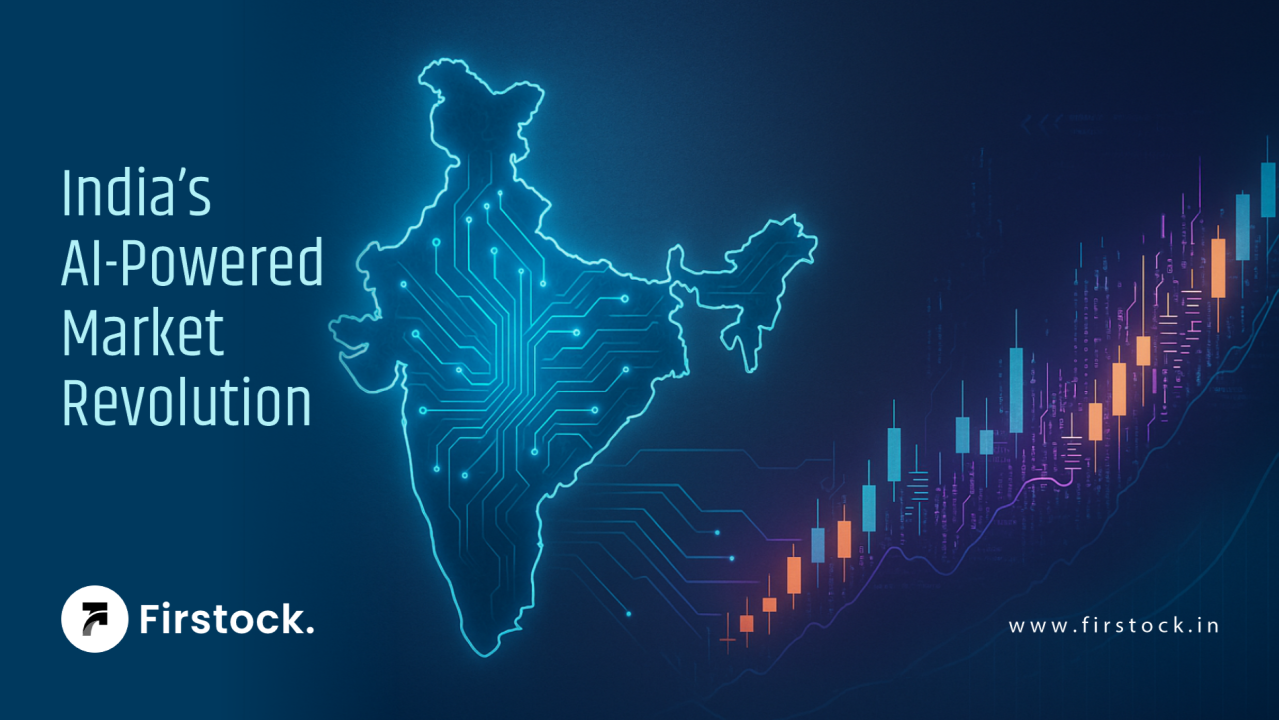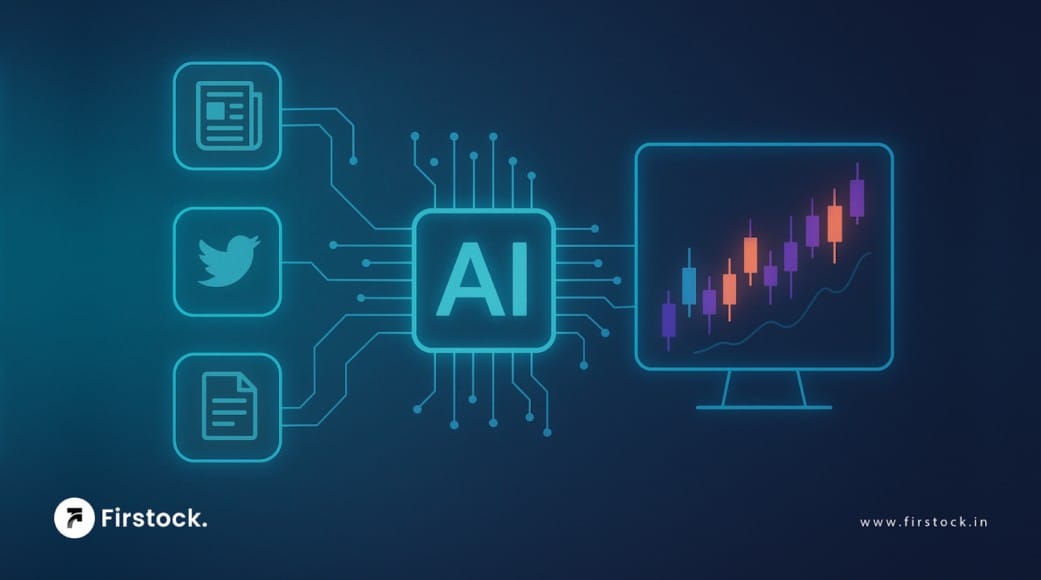India’s Bold Leap into AI-Driven Stock Markets
AI is no longer a buzzword—it’s now powering India’s stock markets with speed, precision, and scale. Learn how it’s changing the game for traders and investors alike.

On March 1, 2024, Indian stock exchanges recorded an unprecedented volume of over 5 billion market messages in a single trading session—more than double the count from 2019. This surge underscores the growing dominance of artificial intelligence in equity markets, with AI algorithms now accounting for over 60% of all trades executed.
This rapid adoption is reshaping market infrastructure, enabling faster trade execution, enhanced risk management, and broader participation from both institutional and retail investors. What was once speculative technology has become a cornerstone of India’s equity ecosystem, driving efficiency and transparency at scale.
Industry experts say this change isn’t just about being faster — it’s also about being more accurate and easier to use. AI is making advanced trading tools available to everyone, not just big investment firms and professional traders.

From Intuition to Algorithmic Precision
Less than three years ago, individual investors relied heavily on personal judgment and basic technical indicators. A landmark SEBI ruling in June 2022 changed the game: retail traders could deploy pre-tested algorithms within predefined risk parameters.
SEBI mandates that all algorithmic trade brokers register and seek approval, ensuring risk management controls and controlled testing before deployment. A survey by HDFC Securities in Q4 2023 found that 42% of urban millennials trust AI-based strategies over their own analysis.
Deep learning models like Transformers and Long Short-Term Memory (LSTM) networks power these algos by ingesting terabytes of data—historical price series, corporate filings, macroeconomic trends, and even Twitter sentiment—to detect patterns, forecast market movements, and execute trades with minimal human intervention. An IIT-Bombay study (2024) showed that bilingual news sentiment analysis improved forecasting accuracy by 15% compared to traditional models. It’s like having a super-powered research desk that's always on duty.
AI-Enhanced Surveillance and Risk Management
AI’s fast pace requires just-as-fast regulation. With exchanges handling more than 5 billion messages daily, manual oversight is out of the question. Machine learning systems now flag anomalies—spoofing, layering, sudden volume spikes—in real time. In March 2024, AI tools uncovered a coordinated pump-and-dump on a mid-cap stock, averting potential losses exceeding ₹500 crore.
Meanwhile, the RBI launched MuleHunter.ai in late 2024 to monitor suspicious fund flows. It’s helping banks and regulators stay ahead of money-laundering schemes by sifting through millions of transactions faster than any human team ever could.
Robo-Advisors: Institutional Expertise for Everyone
Robo-advisors have evolved from basic portfolio builders to dynamic wealth engines. These platforms gather your risk profile, investment horizon, and tax details, then use reinforcement learning to rebalance on the fly. During the bond-market selloff in February 2024, leading robo-advisors automatically shifted up to 15% of equity exposure into gilt ETFs in under 10 minutes—something a traditional advisory model would struggle to match.
And it’s not just about rebalancing. Features like tax-loss harvesting and real-time performance dashboards give retail investors tools once exclusive to high-net-worth individuals.
Balancing Innovation and Oversight
SEBI’s 2023 consultation on AI governance requires algorithm providers to disclose high-level logic, share backtesting results, and incorporate ‘kill switches’ to halt trades in emergencies. Complementing this, the RBI’s FREE-AI committee—set up in December 2024—is drafting ethical guidelines to tackle bias and boost model explainability.
Under the Digital Personal Data Protection Act (2023), fintechs must secure explicit user consent for any data used by AI, resulting in intuitive consent dashboards that let investors control exactly how their information is used.
Core AI Technologies in Action
"Artificial Intelligence is not just a tool but a transformative force reshaping how we analyze data, make decisions, and execute strategies in real time." - Salesforce
The following sections explore three foundational AI technologies—Natural Language Processing (NLP), Reinforcement Learning (RL), and Explainable AI (XAI)—along with the emerging challenges that accompany their adoption.
Natural Language Processing (NLP)
NLP in trading involves the application of machine learning techniques to process and analyze vast amounts of unstructured text data—such as corporate earnings calls, financial news, analyst reports, and social media posts—to extract actionable insights. Techniques like sentiment analysis, named entity recognition, and topic modeling allow algorithms to quantify qualitative information, detecting shifts in market sentiment or emerging trends that might not yet be reflected in price data.
For example, advanced models such as BERT (Bidirectional Encoder Representations from Transformers) have been adapted to financial text to capture nuanced language patterns and contextual sentiment, enabling more accurate predictions of stock price movements based on news tone changes or management commentary nuances. This real-time parsing of textual data provides traders with a competitive edge by automating what was traditionally a manual, time-consuming research process.
However, NLP faces challenges including data quality variability, ambiguity in language, and the need to interpret domain-specific jargon. Moreover, the latency of processing large text volumes must be minimized to be effective in high-frequency trading environments.
Reinforcement Learning (RL)
Reinforcement Learning represents a paradigm shift in algorithmic trading by enabling models to learn optimal trading strategies through interaction with the market environment. Unlike static rule-based algorithms, RL agents receive feedback in the form of rewards or penalties based on their actions (e.g., executing trades), and iteratively improve their policies to maximize cumulative returns.
In practice, RL models simulate millions of trading scenarios, balancing exploration (trying new strategies) and exploitation (refining known profitable strategies). Deep Reinforcement Learning (DRL) combines RL with deep neural networks to handle complex, high-dimensional market data inputs, such as price series, order book states, and macroeconomic indicators.
RL models dynamically adapt to changing market conditions, optimizing execution to minimize slippage (the difference between expected and actual trade prices) and market impact. They can also incorporate risk constraints and transaction costs into their reward functions, enabling sophisticated portfolio management and trade timing decisions.
Despite their promise, RL models require extensive historical data for training, careful tuning to avoid overfitting, and face interpretability challenges due to their complex decision-making processes.
Explainable AI (XAI)
Explainable AI seeks to make the decisions of complex AI models transparent and interpretable, addressing the "black box" problem that often hinders trust and regulatory acceptance in finance. XAI techniques generate human-understandable explanations for model outputs, such as highlighting which features or data points triggered a buy or sell signal.
In financial trading, XAI might produce "reason codes" like “buy signal triggered by 5% drop in negative media sentiment” or “sell signal due to rising short interest and deteriorating earnings outlook.” These explanations help traders and compliance officers verify and validate algorithmic decisions, improving confidence and facilitating regulatory audits.
XAI methods include feature importance scoring, surrogate models (simpler models approximating complex ones), and counterfactual explanations (showing how slight input changes would alter the decision). The financial sector’s adoption of XAI is growing, supported by research collaborations aiming to tailor explainability to diverse stakeholders such as traders, risk managers, and regulators.
Emerging Challenges
"The rapid adoption of AI in trading brings unprecedented opportunities, but also new risks—market instability, data biases, and systemic vulnerabilities—that require vigilant oversight and innovative solutions." - Dr. Andrew Lo, MIT Professor of Finance and AI expert
While AI introduces tremendous potential, it also creates new vulnerabilities. The following two sections examine how algorithmic herding and data integrity failures threaten market stability and decision reliability—often as byproducts of the very AI technologies that drive performance.
Algorithmic Herding
Algorithmic herding occurs when multiple AI-driven trading algorithms react similarly to market signals, leading to synchronized buying or selling. This behavior can amplify volatility and trigger rapid market moves, as witnessed in the 2% Nifty plunge in June 2024, where AI-driven sell-offs cascaded in a short span.
Research shows that algorithmic traders exhibit heightened sensitivity to global market volatility and uncertainty, leading to pronounced herding during turbulent periods.
Conversely, they may display "inattention" to local volatility spikes, sometimes ignoring important market nuances. This dual behavior complicates market stability and poses challenges for regulators seeking to prevent systemic risks4.
Data Integrity
AI models, particularly those based on large language models (LLMs) and deep learning, are highly sensitive to the quality and representativeness of their training data.
Risks include:
- Hallucinations: AI generating plausible but factually incorrect outputs, which can mislead trading decisions.
- Biases: Inherited from training datasets, leading to skewed or discriminatory outcomes, such as favoring certain sectors or ignoring emerging markets.
- Security and Privacy: Exposure of sensitive data through model inputs or training processes.
- Prompt Sensitivity: Model outputs can vary significantly based on query phrasing, affecting consistency.
Maintaining data integrity requires robust governance frameworks, continuous monitoring, and validation to detect and correct errors or biases. These challenges are critical because flawed data can propagate systematic errors in trading strategies, leading to financial losses or unfair market advantages.
Infrastructure Accessibility
High-frequency and algorithmic trading demand ultra-low latency infrastructure—high-speed servers, direct market access, and reliable data feeds—to execute trades within milliseconds. Traditionally, such infrastructure was accessible only to large institutional players due to cost and complexity.
Partnerships with cloud providers and advances in distributed computing are democratizing access, enabling retail and smaller institutional investors to deploy sophisticated AI-driven strategies. However, ensuring consistent low-latency performance, cybersecurity, and regulatory compliance across diverse infrastructure providers remains a technical and operational challenge.
Where Human Judgement Still Matters
Despite AI’s lightning reflexes, human judgment remains the final frontier. Early-2025 pilot programs paired algorithmic signals with certified advisors: portfolios that combined machine speed with human scrutiny saw 20% higher client satisfaction (from 68 to 82 on a standard Net Promoter scale) and 12% lower churn.
APIs from cloud giants and open platforms like QuantConnect let retail developers tap the same volatility-targeting strategies that big funds live by. Yet, it’s the seasoned eye of a portfolio manager that often knows when to override a model—for instance, when geopolitical events create black-swan risks no historical data could anticipate.
What’s Next?
From the frantic, code-driven spikes at the opening bell to the measured click of a robo-advisor rebalancing at midnight, AI has rewired every corner of India’s equity ecosystem. It’s faster. It’s smarter. And it’s far more accessible than even five years ago. But with great power comes great responsibility: robust governance, transparent algorithms, and a steady human hand will define who truly wins in this high-velocity market.
“Technology alone is not enough. It’s technology married with liberal arts, married with the humanities, that yields us the results that make our hearts sing.” - Steve Jobs
Because in the end, algorithms may light the fuse—but it’s human strategy that decides whether markets ignite or implode.





